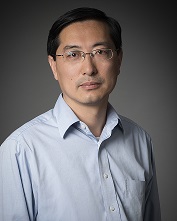 Trained as a plant biochemist, Binxing Li, PhD, first studied carotenoids that were isolated from green algae living in the East China Sea.
Trained as a plant biochemist, Binxing Li, PhD, first studied carotenoids that were isolated from green algae living in the East China Sea.
A desire to study them in humans led Li to the John A. Moran Eye Center at the University of Utah, where he's investigating how carotenoids pigments that provide color to plants and natural organisms can also prevent retinal diseases in the human eye.
"We know carotenoids can reduce approximately 40 percent of the risk of AMD, so it's important to understand exactly how our bodies process them to get them into the eye," explained Li, an assistant professor of ophthalmology and visual sciences. "Humans have to get carotenoids from their diets the body can't make them."
Li's work with co-principal investigator Paul Bernstein, MD, PhD, recently earned him a $160,000 grant from the BrightFocus Foundation. Using a newly discovered mouse model, Li and Bernstein will use the funds to determine if and how a protein called SR-B1 transports carotenoids from the bloodstream to the retina. Their results may lead to new treatments and therapies to prevent age-related macular degeneration (AMD), using carotenoid supplements.
A Maryland-based nonprofit, BrightFocus is a leading source of funding and support for scientific research to defeat Alzheimer's, glaucoma, and AMD.